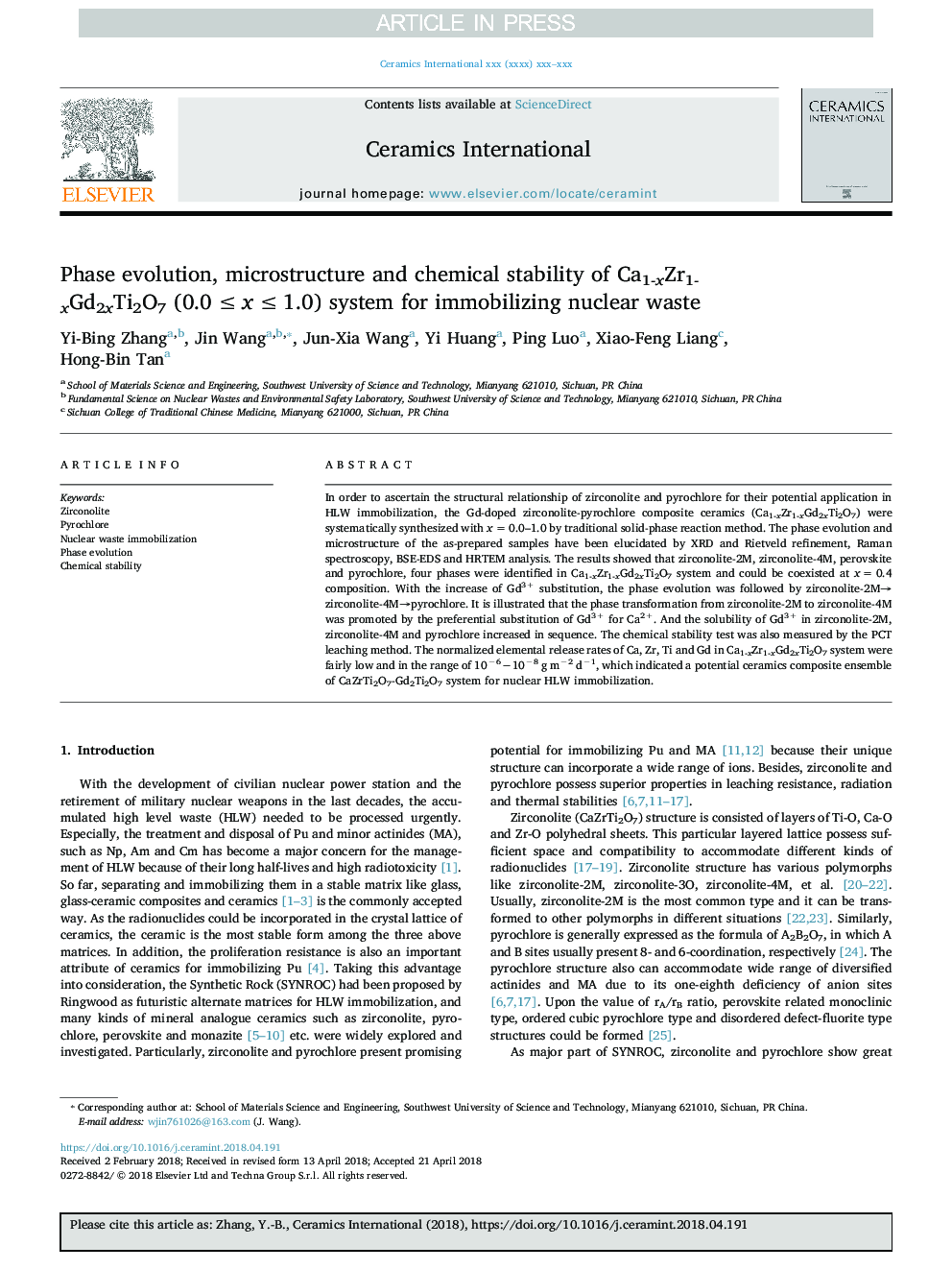| Article ID | Journal | Published Year | Pages | File Type |
|---|---|---|---|---|
| 7886312 | Ceramics International | 2018 | 8 Pages |
Abstract
In order to ascertain the structural relationship of zirconolite and pyrochlore for their potential application in HLW immobilization, the Gd-doped zirconolite-pyrochlore composite ceramics (Ca1-xZr1-xGd2xTi2O7) were systematically synthesized with xâ¯=â¯0.0-1.0 by traditional solid-phase reaction method. The phase evolution and microstructure of the as-prepared samples have been elucidated by XRD and Rietveld refinement, Raman spectroscopy, BSE-EDS and HRTEM analysis. The results showed that zirconolite-2M, zirconolite-4M, perovskite and pyrochlore, four phases were identified in Ca1-xZr1-xGd2xTi2O7 system and could be coexisted at xâ¯=â¯0.4 composition. With the increase of Gd3+ substitution, the phase evolution was followed by zirconolite-2Mâzirconolite-4Mâpyrochlore. It is illustrated that the phase transformation from zirconolite-2M to zirconolite-4M was promoted by the preferential substitution of Gd3+ for Ca2+. And the solubility of Gd3+ in zirconolite-2M, zirconolite-4M and pyrochlore increased in sequence. The chemical stability test was also measured by the PCT leaching method. The normalized elemental release rates of Ca, Zr, Ti and Gd in Ca1-xZr1-xGd2xTi2O7 system were fairly low and in the range of 10â6â10â8 gâ¯mâ2 dâ1, which indicated a potential ceramics composite ensemble of CaZrTi2O7-Gd2Ti2O7 system for nuclear HLW immobilization.
Related Topics
Physical Sciences and Engineering
Materials Science
Ceramics and Composites
Authors
Yi-Bing Zhang, Jin Wang, Jun-Xia Wang, Yi Huang, Ping Luo, Xiao-Feng Liang, Hong-Bin Tan,
